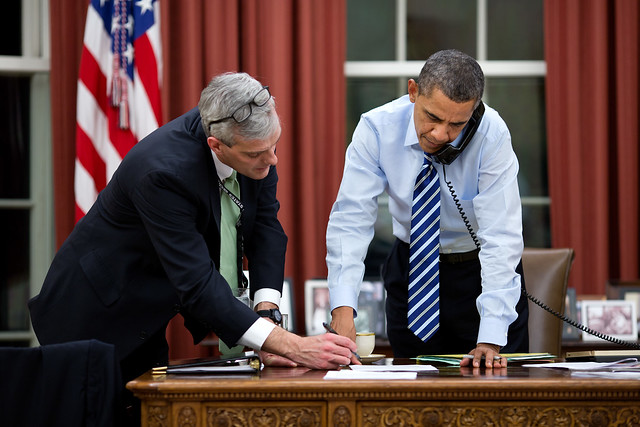Top 5 Things to Know About President Obama's 2014 Budget
By
Mattea Kramer
Posted:
|
Budget Process,
Debt & Deficit,
Education,
Military & Security
President Obama in the Oval Office/ White House flickr
Today President Obama released his fiscal 2014 budget proposal, which set a record for arriving two months after the legal deadline of the first Monday in February. Here are the top five things to know about the new budget.
5. The president's budget would reduce Social Security cost-of-living adjustments through "chained CPI."
President Obama became the first Democratic president ever to propose reductions in Social Security benefits by endorsing an alternate measure of inflation – known as chained CPI – to shrink cost-of-living adjustments for retirees. The president plans to save $230 billion over 10 years through this change. Nearly 90 percent of Americans oppose cuts to Social Security.
4. President Obama proposes universal access to prekindergarten education.
In his State of the Union address in February the president set out the goal of universal access to prekindergarten. This budget would provide funding to pursue that landmark initiative through an increase in taxes on tobacco products. A strong majority of Americans support expanded education funding.
3. The wealthiest taxpayers would enjoy fewer tax deductions while corporations would not see their taxes rise.
President Obama proposes limiting tax deductions for the wealthiest 2 percent of earners, as well as closing certain loopholes in the tax code such as "carried interest" that allows hedge fund managers to pay a special low tax rate. The budget also includes a "Buffett rule" to ensure that millionaires pay a minimum tax rate of 30 percent. The president does not propose any new taxes on corporations.
2. The Department of Defense would be cut by 1.6 percent.
The president proposes replacing the across-the-board cuts of sequestration with alternative means of deficit reduction. Therefore the Department of Defense is largely spared from cuts. The president's budget includes $526.6 billion for the Pentagon's base budget, a figure that does not include war costs or nuclear weapon activities at the Department of Energy. That represents a 1.6 percent cut relative to current levels.
1. The budget includes $3.8 trillion in new spending and achieves deficit reduction with a 2.5-to-1 ratio of spending cuts to new tax revenue.
In total, the president's budget projects $3.8 trillion in spending for fiscal 2014 and plans for $1.8 trillion in deficit reduction over the coming decade. Together with $2.5 trillion in deficit reduction already enacted, the president is proposing a total deficit reduction package heavily tilted toward reducing spending, with a 2.5-to-1 ratio of spending cuts to new tax revenue.
